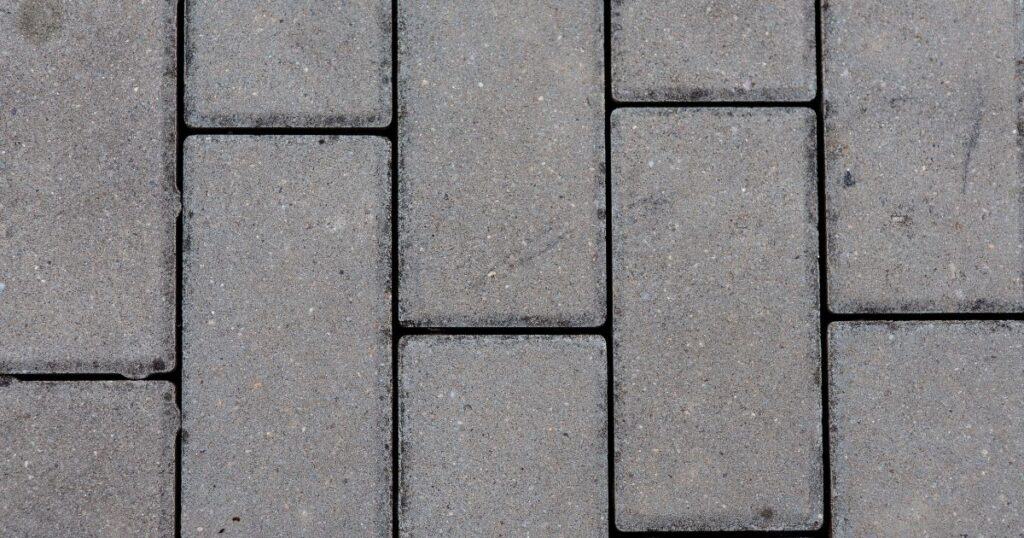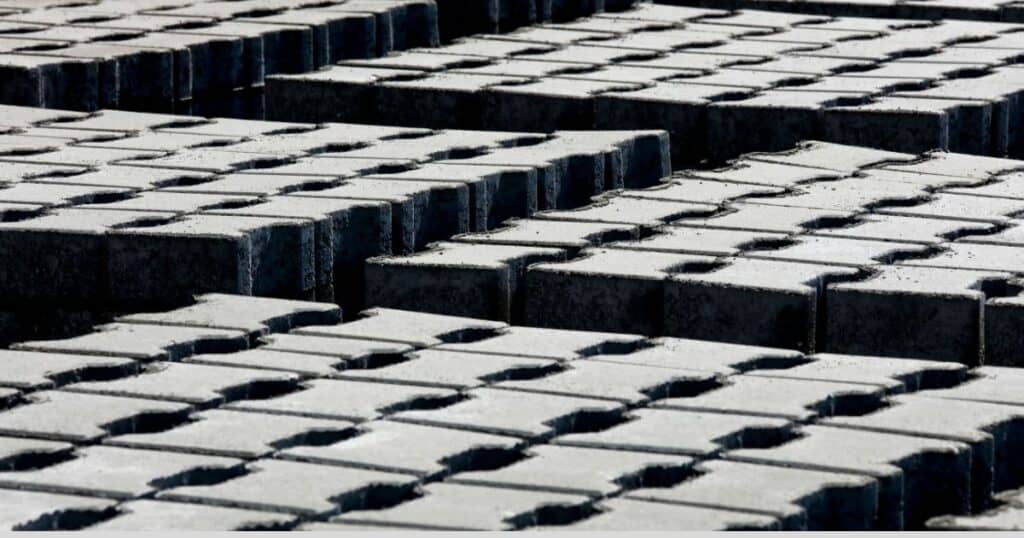Block paving is a popular solution for outdoor areas such as gardens, walkways, terraces and parking lots. Thanks to its locking system of joints, it offers high stability and load resistance. In addition, it is aesthetically appealing, making it an ideal choice for those looking for a stylish and long-lasting surface.
A wide range of interlocking tiles with different shapes, sizes, thicknesses and colors is available on the market. Thanks to this variety, you can find a tile that will perfectly match your home and its surroundings. It is also possible to combine different types of tiles to create unique patterns and designs.
When choosing interlocking pavers for driveways, it is important to take into account the load that the surface will have to bear in order for the pavers to last as long as possible. For example, paving with a thickness of 6 cm is usually suitable for loads up to 3.5 tons, while paving with a thickness of 8 cm can also withstand vehicle loads of more than 3.5 tons.
What is interlocking paving?
Lock paving is a type concrete tiles of a uniform shape, which is characterized by its ability to fit into one another, thanks to which it offers easy laying and a high degree of stability and resistance. These tiles are made of compacted concrete and have a faceted top, which means it is finished for a better look.
Thanks to its features such as easy laying, favorable price, durability and high load resistance, interlocking paving is suitable for various outdoor construction projects such as terraces, sidewalks, driveways or parking lots.
Lock paving is available in different shapes and color variants, which can be easily combined and laid. The tiles have so-called locks on the sides, thanks to which they fit together well and provide a solid unit.
Depending on the needs of your project, you can choose interlocking tiles of different heights, for example 6 cm or 8 cm. As standard, the 6cm height is a common choice for walkways and patios, while the 8cm height is more suitable for projects that require higher load resistance, such as a driveway.
For a better idea of the possibilities of interlocking paving, you can contact the experts who will help you choose the most suitable type for your project. Do not forget to consider what the purpose of the paving will be and what the expected load will be to make sure that your choice will be correct.

Types and design
Shades and textures
Lock tiles offer a wide range of shades and textures, allowing you to find the ideal option for your project. Concrete pavement it is available in many shades from natural colors such as gray and brown to bold reds and blacks. Interlocking paving textures can be smooth, semi-rough or coarse, which are suitable for different surfaces and safety requirements.
Size category
Lock paving is available in different size categories and thicknesses, which allows the optimal selection for your requirements. The size and thickness of the pavement is usually proportional to its ability to withstand the load. Dimensions range from standard tiles (10x20 cm) to large formats (40x40 cm).
When choosing interlocking tiles, it is therefore important to consider shades, textures, specific shapes and size categories. Keep design, load and budget requirements in mind so that your choice of concrete pavers best suits your needs.

Use of interlocking paving
Sidewalks and paths
Block paving is an ideal choice for creating sidewalks and paths. Thanks to its durability and variability of shapes, you can create your own unique design. The range of different shades allows you to choose just the right tone that will harmonize with the surroundings of your house or garden. Different types of interlocking paving can be used for sidewalks and paths:
- Simple shapes: square, rectangular
- More complex shapes: hexagons, rhombuses
Driveways and parking lots
Lock paving has a wide range of uses, which also includes driveways and parking lots. Thanks to the high quality of concrete, a wide selection of dimensional modules and durability, interlocking paving is an ideal choice for these purposes. In addition, interlocking paving is affordable, which is also an important factor when choosing a surface for this type of construction.
When choosing interlocking paving for driveways or parking lots, it is important to consider:
- Bearing capacity: the pavement should be able to withstand the load from cars and other means of transport
- Surface treatment: the surface should be rough enough to provide sufficient traction
- Size and shape of tiles: consider whether you need regular or irregular shape tiles for a higher aesthetic effect
Pay attention concrete quality and the correct laying of interlocking tiles to ensure longevity and satisfaction with the result. Do not forget that for parking lots and driveways it is advisable to choose paving with a higher load capacity and resistance to mechanical damage.

Durability and maintenance
Lock paving is a popular material, thanks to its resistance and easy maintenance. It has a high walking load and is able to withstand various weather conditions such as rain, frost or sun.
Maintenance of interlocking paving mainly consists of regular cleaning. Just use water and a broom, or a pressure cleaner, which can effectively remove dirt from the surface. However, it is important to use the pressure cleaner correctly, improper handling can lead to damage to the pavement.
When maintaining interlocking paving, the following must be observed:
- Moss and algae can cause slippage and detract from the appearance of the paving. Remove these impurities mechanically or with suitable cleaning agents.
- It can be used to increase the resistance of paving to external loads special coatings or impregnation. These agents prevent dirt build-up and improve weather resistance.
- In case the pavement suffers shift or sinking, it is necessary to carry out repairs associated with solving the problem of the subsoil on which the paving lies.
If necessary, do not be afraid to consult with an expert in interlocking paving, who will inspect your paving, assess its condition and recommend appropriate interventions to keep it in the best possible condition.
